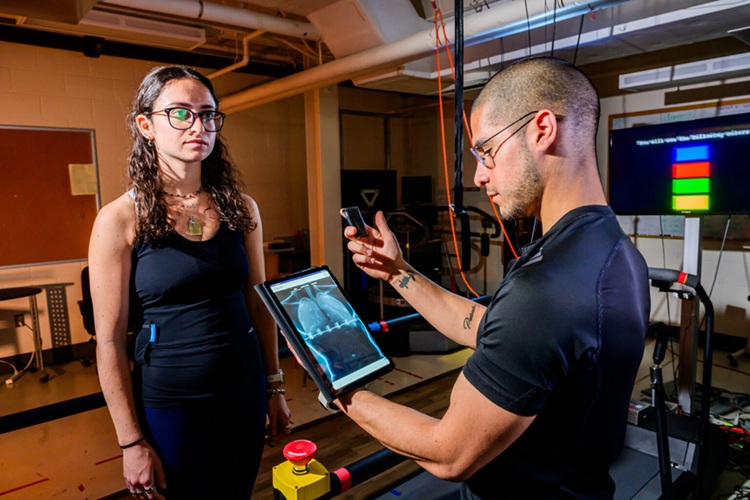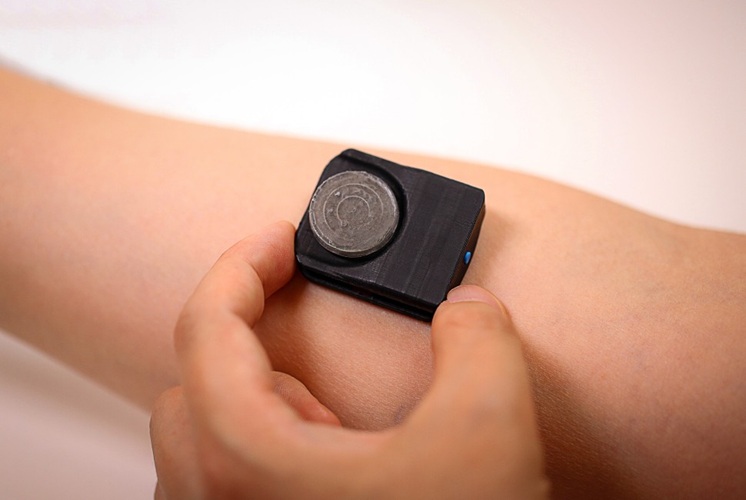Dual-Chamber Wireless Pacemaker Delivers Lasting and Reliable Performance
|
By HospiMedica International staff writers Posted on 31 Jul 2024 |

Pacemakers are devices that send electrical impulses to maintain proper heart rhythm in patients with slow heart rates. Traditional pacemakers are implanted under the skin in the chest, with leads extending through the veins into the heart. Despite their effectiveness, these devices come with risks; for instance, leads can break and are challenging to remove if they become surrounded by scar tissue. They can also become sites for bacterial attachment, potentially causing severe infections. Furthermore, patients with high levels of physical activity, thin individuals, or those with compromised vessels or immune systems may face greater risks with wired pacemakers.
Around a decade ago, wireless pacemakers were introduced, capable of stimulating the heart’s ventricle, providing a less invasive alternative for certain patients with heart rhythm issues. These small devices are inserted via a blood vessel in the groin directly into the heart and fixed in place. In May 2023, clinical trials validated the safety and efficacy of a wireless pacemaker that can stimulate both the atrium and ventricle. In July 2023, this dual-chamber wireless pacemaker received U.S. Food and Drug Administration (FDA) approval, widening the available treatments for patients with diverse cardiac rhythm disorders. Now, a new study supports the long-term reliability of this dual-chamber wireless pacemaker over three months.
Co-led by Weill Cornell Medicine (New York, NY, USA), the follow-up multi-center, international clinical trial expanded on earlier findings by examining the device’s performance under various conditions, such as increased heart rates or changes in posture. At a three-month follow-up, 384 participants from the initial trial wore an external heart monitor during different activities to monitor the device's effectiveness. Published on July 8 in Circulation, the study results confirmed that the device’s components communicated effectively, synchronizing the heart’s upper and lower chambers' contractions 98% of the time. The device also performed well during physical activities and when heart rates increased.
The researchers advocate for using the device’s own data for performance assessments rather than external monitors, though they note that as first-generation devices, they have some limitations, such as shorter battery life compared to traditional pacemakers. However, improvements are anticipated as technology advances. Meanwhile, ongoing studies will continue to assess the performance of these leadless pacemakers, which provide a significant alternative for patients.
“We’ve entered a new era of pacing,” said Dr. James Ip, professor of clinical medicine at Weill Cornell Medicine. “We are not limited to the wired devices we’ve been using for more than 60 years. We now have new technology and methods to help patients and reduce complications.”
Related Links:
Weill Cornell Medicine
Latest Critical Care News
- Novel Intrabronchial Method Delivers Cell Therapies in Critically Ill Patients on External Lung Support
- Generative AI Technology Detects Heart Disease Earlier Than Conventional Methods
- Wearable Technology Predicts Cardiovascular Risk by Continuously Monitoring Heart Rate Recovery
- Wearable Health Monitoring Device Measures Gases Emitted from and Absorbed by Skin
- Groundbreaking Technology Rapidly Detects Airborne Influenza Viruses
- Handheld Device Could Transform Heart Disease Screening
- Flexible Semi-Autonomous Robot Could Deliver Medicine Inside Body

- Neurorestorative Treatment Strategies Hold Promise for Most Severe Forms of Epilepsy
- Gene Discovery Could Help Grow New Heart Arteries
- Study Discovers Invisible Transmission of Common Hospital-Associated Infection
- Non-Invasive Neuro-Ophthalmology Techniques Could Detect Brain Tumors Earlier
- Mass Manufactured Nanoparticles to Deliver Cancer Drugs Directly to Tumors
- World’s Smallest Pacemaker Fits Inside Syringe Tip

- AI-Powered, Internet-Connected Medical Devices to Revolutionize Healthcare, Finds Study
- Starfish-Inspired Wearable Tech Enables Smarter Heart Monitoring
- AI Eye Scans Could Help Identify Heart Disease and Stroke Risk
Channels
Critical Care
view channel
Novel Intrabronchial Method Delivers Cell Therapies in Critically Ill Patients on External Lung Support
Until now, administering cell therapies to patients on extracorporeal membrane oxygenation (ECMO)—a life-support system typically used for severe lung failure—has been nearly impossible.... Read more
Generative AI Technology Detects Heart Disease Earlier Than Conventional Methods
Detecting heart dysfunction early using cost-effective and widely accessible tools like electrocardiograms (ECGs) and efficiently directing the right patients for more expensive imaging tests remains a... Read more
Wearable Technology Predicts Cardiovascular Risk by Continuously Monitoring Heart Rate Recovery
The heart's response to physical activity is a vital early indicator of changes in health, particularly in cardiovascular function and mortality. Extensive research has demonstrated a connection between... Read more
Wearable Health Monitoring Device Measures Gases Emitted from and Absorbed by Skin
The skin plays a vital role in protecting our body from external elements. A key component of this protective function is the skin barrier, which consists of tightly woven proteins and fats that help retain... Read morePatient Care
view channel
Portable Biosensor Platform to Reduce Hospital-Acquired Infections
Approximately 4 million patients in the European Union acquire healthcare-associated infections (HAIs) or nosocomial infections each year, with around 37,000 deaths directly resulting from these infections,... Read moreFirst-Of-Its-Kind Portable Germicidal Light Technology Disinfects High-Touch Clinical Surfaces in Seconds
Reducing healthcare-acquired infections (HAIs) remains a pressing issue within global healthcare systems. In the United States alone, 1.7 million patients contract HAIs annually, leading to approximately... Read more
Surgical Capacity Optimization Solution Helps Hospitals Boost OR Utilization
An innovative solution has the capability to transform surgical capacity utilization by targeting the root cause of surgical block time inefficiencies. Fujitsu Limited’s (Tokyo, Japan) Surgical Capacity... Read more
Game-Changing Innovation in Surgical Instrument Sterilization Significantly Improves OR Throughput
A groundbreaking innovation enables hospitals to significantly improve instrument processing time and throughput in operating rooms (ORs) and sterile processing departments. Turbett Surgical, Inc.... Read moreHealth IT
view channel
Printable Molecule-Selective Nanoparticles Enable Mass Production of Wearable Biosensors
The future of medicine is likely to focus on the personalization of healthcare—understanding exactly what an individual requires and delivering the appropriate combination of nutrients, metabolites, and... Read more
Smartwatches Could Detect Congestive Heart Failure
Diagnosing congestive heart failure (CHF) typically requires expensive and time-consuming imaging techniques like echocardiography, also known as cardiac ultrasound. Previously, detecting CHF by analyzing... Read moreBusiness
view channel
Expanded Collaboration to Transform OR Technology Through AI and Automation
The expansion of an existing collaboration between three leading companies aims to develop artificial intelligence (AI)-driven solutions for smart operating rooms with sophisticated monitoring and automation.... Read more















